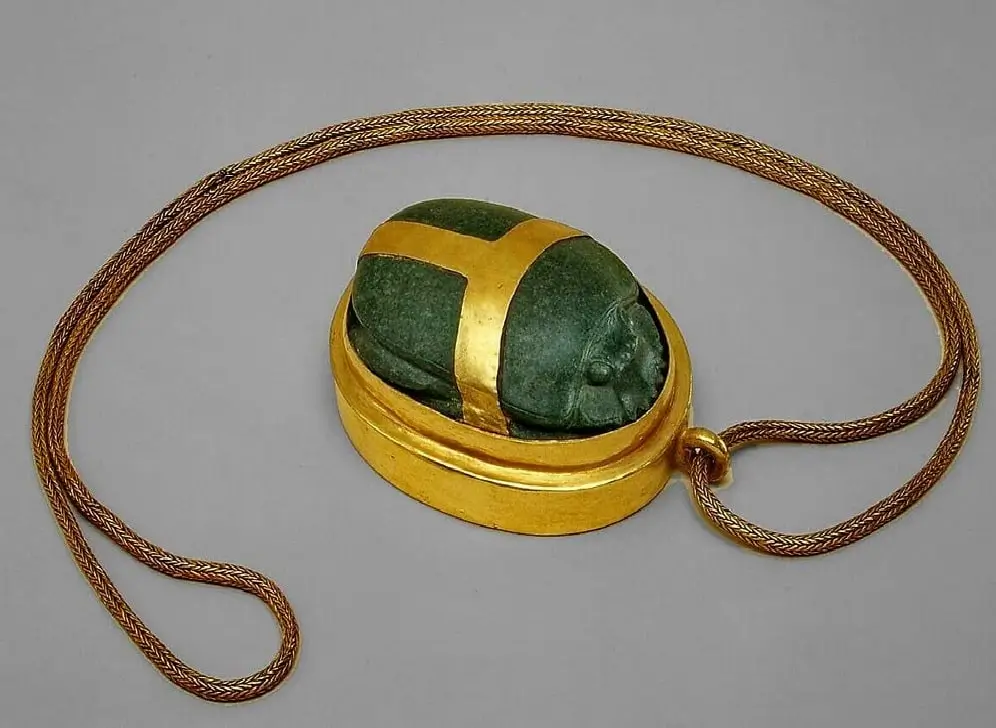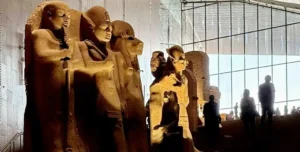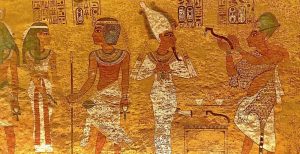Imprints of Power: Scarab Seals and Commemorative Works

The Egyptian Scarab was not solely a religious amulet. It was also an essential tool of administration and history. The small beetle reinforced authority. It also helped record significant royal events.
The Scarab as a Seal
The flat underside of many scarabs was utilized as a seal. This made them indispensable tools for officials, scribes, and private citizens. They used the scarab impression to secure property, authenticate documents, and mark ownership.
A scarab seal impression was a recognized mark of authenticity. It verified identity. Consequently, the scarab became a common administrative item.
Royal and Official Use
Pharaohs and high officials heavily used these seals. Their scarab seals often bore their names, titles, or royal cartouches. This practice physically reinforced their power and authority. The simple act of sealing a document carried the weight of the throne.
Commemorative Scarabs
A specialized and unique group of scarabs served a historical function. Pharaohs, notably Amenhotep III during the New Kingdom, commissioned commemorative scarabs. These were significantly larger than standard amulets. They served as public records.
These large scarabs were created in quantity. They were then distributed to allies, officials, and foreign rulers. They were essentially pieces of royal propaganda and recorded significant events for posterity:
- Royal Marriages: Recording unions between the pharaoh and foreign princesses.
- Hunting Expeditions: Detailing the pharaoh’s prowess, such as the killing of hundreds of wild bulls or lions.
- Construction: Documenting the completion of major public works or monuments.
These large scarabs are invaluable historical records. They provide direct, contemporary insights into royal activities and the ancient Egyptian political landscape. The Egyptians made scarabs in ways that reveal much about ancient Egyptian artistry and the values placed on these tiny objects.
From Stone to Symbol: The Craft of Scarab Creation
The sheer volume of scarabs found across millennia speaks to an efficient, widespread system of production. Scarab creation required specialized knowledge and craftsmanship. The choice of material and the manufacturing process reveal much about the value and permanence the Egyptians assigned to these objects.
Materials and Their Meaning
Artisans used a wide array of materials for scarabs. The selection was often symbolic:
- Steatite: This soft, easy-to-carve stone was the most common. It was frequently covered in a blue or green glaze before firing.
- Faience: This ceramic material allowed for mass production. Its vibrant blue and green colors symbolized the Nile and the sky, linking the scarab to water and life.
- Hard Stones: For heart scarabs and high-status seals, craftsmen chose durable, dark stones. These included basalt, schist, green jasper, and amethyst. These materials ensured the object’s longevity and reflected its immense ritual importance.
- Precious Metals: Gold scarabs were rare and reserved for the royal elite or placed within royal tombs, highlighting their unparalleled value.
The Production Process
The scarab creation process was standardized for consistency.
- Rough Carving: Artisans first chipped the general oval shape of the beetle from a block of the chosen material.
- Detailing: They meticulously carved the beetle’s features. This included the head, legs, and the distinctive division of the wing cases.
- Inscribing: Next, the craftsman carved the inscription onto the flat base. This included names, titles, symbols, or spells from the Book of the Dead.
- Glazing and Firing: Steatite and faience pieces were coated in a glaze and then fired in kilns. This process hardened the material and gave it a lustrous finish.
- Finishing: Hard stone scarabs underwent extensive polishing to achieve a smooth, enduring surface.
Stylistic Evolution
Over three thousand years, the form of the scarab changed subtly. This provides valuable clues for dating artifacts. Early examples in scarab history were often simple and abstract. Later scarabs became more naturalistic, featuring highly detailed legs and segmented bodies, especially during the New Kingdom. By the later periods, some scarabs became exceptionally elongated or incorporated into elaborate scarab jewelry. Understanding their creation helps us appreciate the myriad designs and messages they carried.































